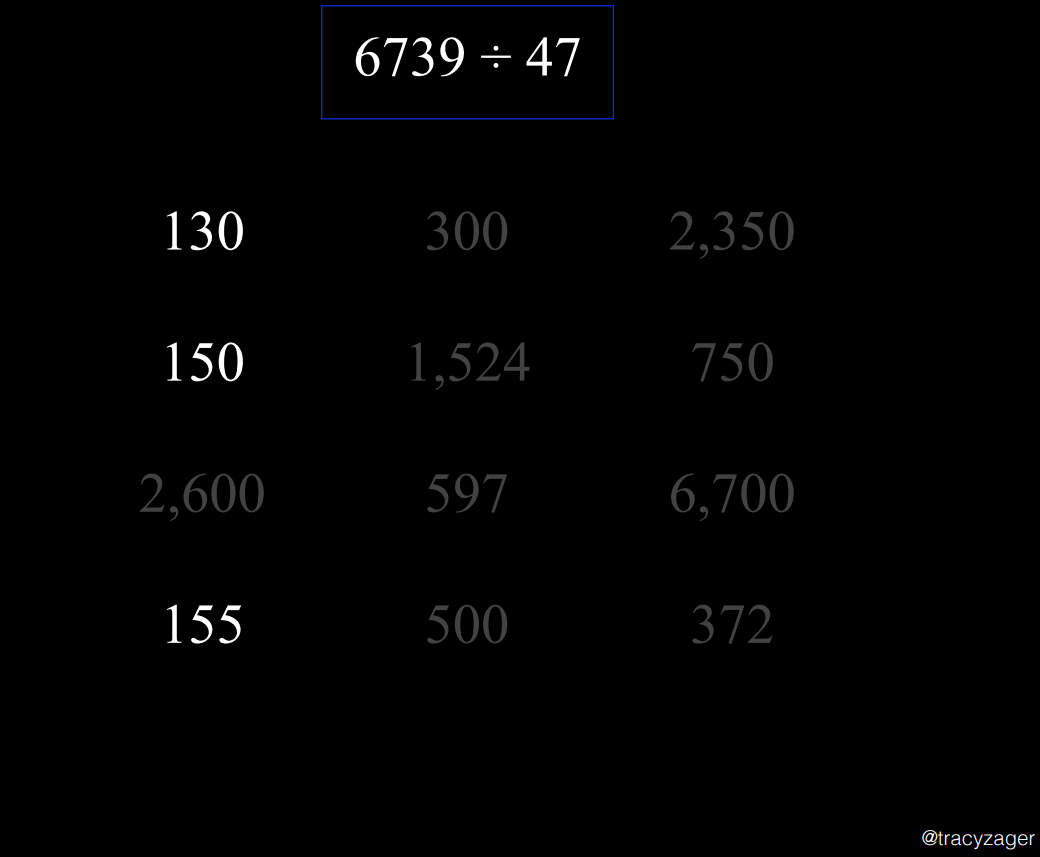By
Jen McAleer, posted June 19, 2017—
When estimation tasks are missing from the classroom, the most common
excuse I hear is “I don’t have the time.” Many teachers feel the pressure of
state-mandated tests and are often given timelines when certain topics should
be introduced and, more important, finished. As a result, many “fun” or
“engaging” activities that require time (like estimation) get pushed to the side.
In this post, I will introduce you to a variety of easy-to-access resources on
estimation and show just how valuable these tasks can be.
My first go-to resource is Andrew Stadel’s Estimation 180. This website provides 220 days of tasks that can
be used for classroom estimation. The tasks tend to play off one another, and
the estimation you do one day can continue to the next. The most important element
in the process is to encourage students to explain their thinking and not just
say “I guessed.” Stadel also has a Google Form to submit your estimate and then
look at how everyone has approached the problem.
Tracy Johnston Zager blogs at Becoming the Math Teacher You Wish You'd
Had and is another good resource. Zager mentioned one example in which students
estimate the angles of various shapes and are then asked to prove or justify
their estimates by using power polygons. Zager also incorporates estimation
into her lessons by embedding it directly into problems that students are doing.
For example, she showed her students 6739/47 and gathered student estimates,
pasted them on the board, and discussed how reasonable (or unreasonable) each estimate
was.

The students were given the prompt “I think ____ is unreasonable because
________” when framing the discussion. I have used this activity in my discussions of estimation, and it is a
game changer.
Another site that has inspired me to think outside the estimation box is
Dane Ehlert’s When Math Happens. Ehlert does a fantastic job of taking content-level
material and providing visuals. My students are engaged during these tasks on
such topics as “Where will the two parabolas meet?” Ehlert has inspired me to work
on my own creations.
Another good site is http://getmadmath.weebly.com. Which has many tasks with embedded estimation. These
ideas can start deeper conversations about multiplication, division, decimals,
and percentages, all while questioning and looking more closely at the food and
deals we consume daily.
Estimation tasks need not be about perfection. I lose many students to
the idea that mathematics has to be perfect. It is inefficient to be perfect
while estimating because there are too many mathematical factors to consider.
Students need to realize that they can be quite precise with just a few
calculations.
Check out some of the resources discussed here and follow @estimation180
and #MTBoS on Twitter. New resources are posted every day. Try a few out! You
will soon be devising your own tasks once you see how engaged your students
are.
.png)
Jen
McAleer is the head of middle school mathematics (grades 6–8) at the Carroll
School in Lincoln, Massachusetts. The Carroll School serves students with
language-based learning difficulties who also tend to struggle with
mathematics. McAleer has been teaching middle school for ten years and has a
passion for giving all students a voice in mathematics and providing them with
opportunities to be and feel successful while working with higher-level
content, despite their struggles with procedures and computation. Reach McAleer
via Twitter at @jennifuhs4.